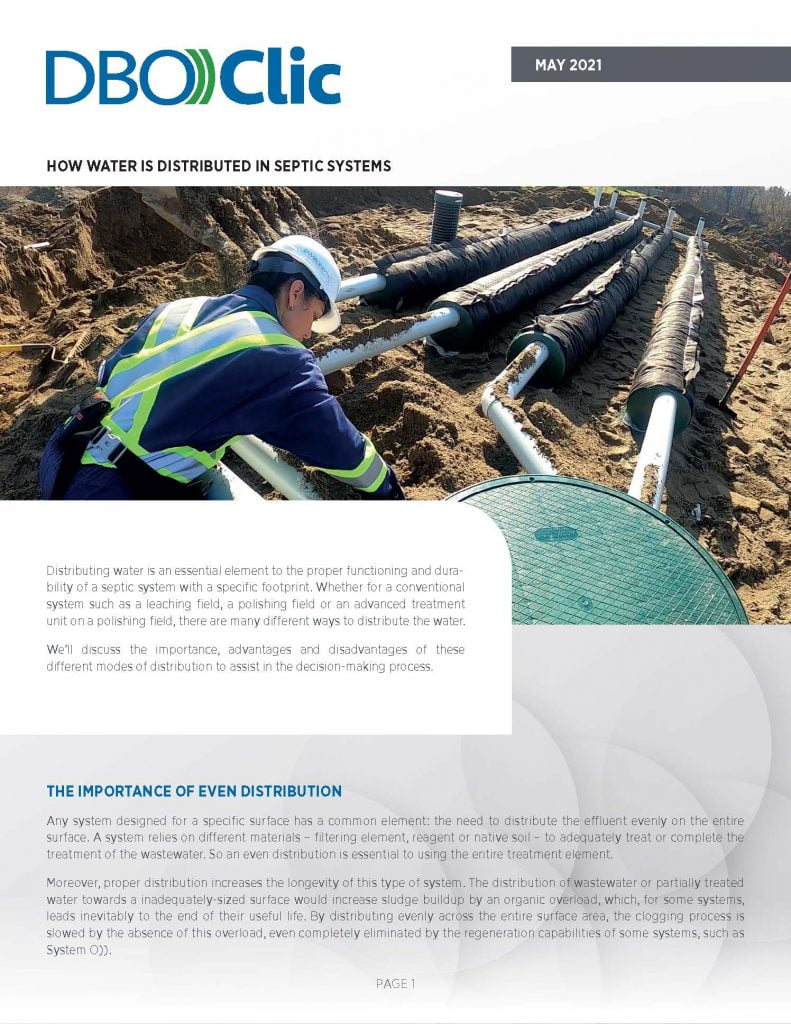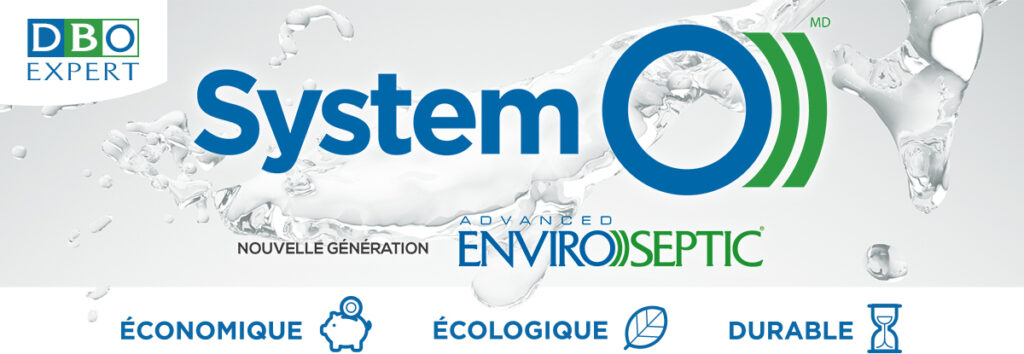Distributing water is an essential element to the proper functioning and durability of a septic system with a specific footprint. Whether for a conventional system such as an infiltration trench, leach field unit, leach field or polishing field, there are many different ways to distribute the water.
We’ll discuss the importance, advantages and disadvantages of these different modes of distribution to assist in the decision-making process.
The importance of even distribution
Any system designed for a specific surface has a common element: the need to distribute the effluent evenly on the entire surface. A system relies on different materials – filtering element, reagent or native soil – to adequately treat or complete the treatment of the wastewater. So, an even distribution is essential to using the entire treatment element.
Moreover, proper distribution increases the longevity of this type of system. The distribution of wastewater or partially treated water towards an inadequately-sized surface would clog the receiving surface by an organic overload, which, for some systems, leads inevitably to the end of their useful life. By distributing evenly across the entire surface area, the clogging process is slowed by the absence of this overload, even completely eliminated by the regeneration capabilities of some systems, such as System O)).
In order to distribute evenly across the entire surface, two criteria must be considered:
DISTRIBUTION BETWEEN ROWS
Most distribution systems are composed of pipes or infiltration chambers spread on a surface, across many rows. Obviously, an efficient distribution between all rows is the first step towards even distribution of the water. The different modes of distribution aim mainly for this aspect.
LENGTH-WISE DISTRIBUTION
Less considered, the distribution of the water along each row is just as important. For instance, the majority of conventional installations do not use this method by simply using perforated pipes. Although a low-pressure distribution would alleviate this weakness, this method is far less popular than gravity-fed systems.
This weakness is in part responsible for the limited useful life of conventional leach fields: with only a simple supply at the start of the system, only the first few centimeters really receive water. This hydraulic and organic overload, as stated above, significantly increases the sludge buildup in the native soil. Only once these are fully clogged can the following centimeters receive water. Without the ability to unclog, it is only a question of time before the entire system is clogged.
The Advanced Enviro))Septic pipes used in System O)) have proven, on the bench test as well as in the field since 2004, their ability to distribute length-wise after a few weeks of use, even with a gravity-feed. With its ideal bacterial support and great ability to autoregulate, water is quickly assimilated over several meters, with losing control over the biomass (see DBO))Clic – Sludge).
to conclude
Each distribution method has its share of advantages and disadvantages. According to site conditions, size of the system, its treatment capacity, the availability of electricity, maintenance service or even local laws and regulations, any method of distribution can be preferred.
For a more in-depth explanation, you can access the technical document below.




